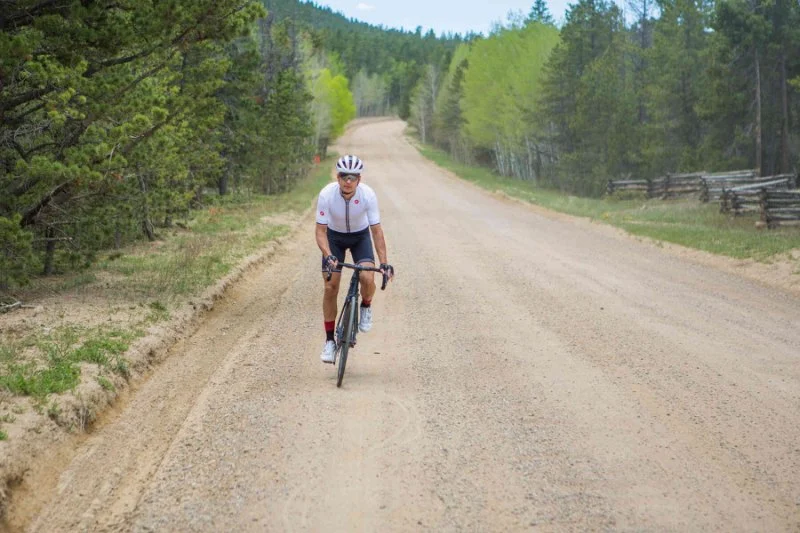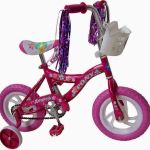
How to Transition From Road to Gravel Riding Smoothly
- 1- Understanding the Difference Between Road and Gravel Riding
- 2- Choosing the Right Bike for Gravel Riding
- 3- Adjusting Your Gear for Gravel Riding
- 4- Mastering Gravel Riding Techniques
- 5- Safety Tips for Gravel Riding
- 6- Where to Find the Best Gravel Riding Gear and Bikes
1- Understanding the Difference Between Road and Gravel Riding
Gravel riding offers a unique experience compared to traditional road cycling. While road bikes are optimized for smooth pavement, gravel bikes are built to handle rougher terrain. The main differences include tire width, frame geometry, and handling characteristics. Gravel paths often feature loose dirt, rocks, and other challenging surfaces that can require different riding techniques. Making the transition from road to gravel riding can be a smooth and enjoyable process if you understand the differences and prepare accordingly.
2- Choosing the Right Bike for Gravel Riding
One of the most important factors in ensuring a smooth transition from road to gravel riding is selecting the right bike. Gravel bikes are specifically designed to handle off-road conditions, but there are a few key factors to consider when choosing the perfect bike for your needs.
2.1- Gravel Bike vs Road Bike
Road bikes have narrow tires and a geometry that favors speed and efficiency on smooth surfaces, while gravel bikes come with wider tires (usually 35mm or more) that offer better traction on loose surfaces. Gravel bikes also have a more relaxed frame geometry for added comfort over long distances and rough terrain.
2.2- Tires and Wheels
For gravel riding, choosing the right tire is crucial. Wider tires help provide stability and comfort on rough surfaces, while also allowing for better control. Tubeless tires are also a popular choice for gravel riding because they are less prone to punctures, providing a more reliable and enjoyable ride.
2.3- Frame and Suspension
Many gravel bikes feature frames that offer slightly more clearance for wider tires, and some may even have built-in suspension features to smooth out the ride. If you're planning to ride more rugged terrain, look for a gravel bike with additional comfort features, such as shock-absorbing seat posts or front forks with minimal suspension.
3- Adjusting Your Gear for Gravel Riding
As you move from road to gravel riding, you'll want to adjust your gear setup to match the demands of off-road cycling. Gear selection is crucial in helping you maintain control and comfort while navigating rough surfaces.
3.1- Gearing and Shifters
Gravel riding often requires more versatility in gearing compared to road cycling. A wider range of gears is important for tackling steep climbs, descents, and varied terrain. Many gravel bikes come with a 1x drivetrain or a wide-range 2x drivetrain, allowing you to shift smoothly across different surfaces.
3.2- Handlebars and Grip
Gravel-specific handlebars often have a flared design to offer more hand positions and stability while riding on uneven terrain. You may also want to consider adding extra grip or padded handlebar tape for additional comfort during long rides on rough gravel roads.
4- Mastering Gravel Riding Techniques
Transitioning to gravel riding requires adjustments in riding technique. The terrain and conditions differ significantly from smooth, paved roads, so it’s essential to modify your approach for a safer and more enjoyable experience.
4.1- Riding Position and Posture
On gravel, it's important to keep your body relaxed and your weight centered over the bike. In comparison to road riding, gravel riding often requires a more upright posture, especially when riding on rough terrain. This helps maintain better control and reduce fatigue over longer rides.
4.2- Handling Rough Terrain
One of the biggest challenges of gravel riding is dealing with uneven and loose surfaces. When riding over loose gravel, mud, or rocks, it’s important to maintain a steady, smooth pedal stroke. Avoid sudden movements, and keep your handlebars relaxed to prevent your bike from becoming unstable.
4.3- Cornering and Descending
Cornering on gravel is different from road cycling. You'll want to enter turns with a slightly wider stance and allow your bike to naturally slide through the turn. On descents, try to keep your weight balanced over the bike to prevent losing traction and control. Always slow down when descending on loose gravel or uneven surfaces.
5- Safety Tips for Gravel Riding
Gravel riding can be more demanding on your bike and body than road cycling, so it’s important to take safety precautions to prevent accidents and injuries.
5.1- Wear Proper Protective Gear
Always wear a helmet when riding on gravel, as the risk of falls and crashes increases on uneven surfaces. Additionally, consider wearing gloves, knee and elbow pads, and protective eyewear for added safety and comfort.
5.2- Ride with Caution
Take extra care when riding on gravel roads, especially if you're new to off-road cycling. Gravel can be unpredictable, with loose sections or hidden obstacles. Be mindful of your surroundings, ride at a pace that’s comfortable for you, and always stay in control of your bike.
5.3- Regular Bike Maintenance
Gravel riding places more strain on your bike compared to road cycling, so it's essential to perform regular maintenance. Clean your bike after each ride, check your tires for wear and tear, and make sure your drivetrain is functioning smoothly to avoid any issues while riding.
6- Where to Find the Best Gravel Riding Gear and Bikes
Transitioning to gravel riding requires the right gear, including gravel-specific bikes, tires, and accessories. For a wide selection of top-notch gravel riding equipment, visit Cycling Guider where you can find expert recommendations for bikes, gear, and tools designed to help you make the most of your gravel adventures.







 Billet BMX5.0 (2 reviews)
Billet BMX5.0 (2 reviews) Far East Children Bicycle Factory1.0 (1 reviews)
Far East Children Bicycle Factory1.0 (1 reviews) Archer Motorsports, Inc.4.0 (8 reviews)
Archer Motorsports, Inc.4.0 (8 reviews) YEP Bike Works4.0 (55 reviews)
YEP Bike Works4.0 (55 reviews) Gorham Bike & Ski4.0 (498 reviews)
Gorham Bike & Ski4.0 (498 reviews) Alchemy Bikes4.0 (37 reviews)
Alchemy Bikes4.0 (37 reviews) How to Teach Kids to Ride a Bike: A Step-by-Step Guide for Parents
How to Teach Kids to Ride a Bike: A Step-by-Step Guide for Parents Tips for Riding on Busy City Streets: Smart Strategies for Urban Cyclists
Tips for Riding on Busy City Streets: Smart Strategies for Urban Cyclists Best US National Parks for Mountain Biking: Ride Epic Trails Across America
Best US National Parks for Mountain Biking: Ride Epic Trails Across America Best Aero Helmets for Time Trials and Racing
Best Aero Helmets for Time Trials and Racing How to Clean and Lubricate Your Bike Chain Like a Pro
How to Clean and Lubricate Your Bike Chain Like a Pro 10 Must-Have Items for Long-Distance Cycling Trips
10 Must-Have Items for Long-Distance Cycling Trips